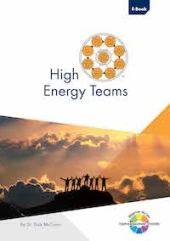How Will We Get There?
Once your team is clear on where it’s going, the next step is planning the path. How will we get there? is about turning vision into action—through clear objectives, structured plans, and the flexibility to adapt along the way.
High-energy teams don’t leave progress to chance. They set priorities, make focused plans, and stay alert to the obstacles that could get in their way.
🎥 Watch the Video: See how planning, action and focus drive team performance.
What does "How Will We Get There?" explore?
- Team and individual objectives – Does everyone know what success looks like and what’s expected of them? Clear goals create accountability and direction.
- Action plans – Is there a structured, realistic plan to guide the team forward? Action plans clarify who does what, when, and why.
- Obstacle awareness – Is the team prepared for what might get in the way? Understanding potential blockers helps your team stay agile and resilient.
- Focus on critical tasks – Are you spending time on the work that truly matters? The Types of Work Wheel helps teams focus on the tasks that deliver results.
Why "How Will We Get There?" matters
A shared vision without a plan is just wishful thinking. This question brings strategy down to earth, turning purpose into performance through clear goals, aligned effort, and day-to-day action.
It also creates the structure teams need to stay on track—especially when projects get complex or priorities shift.
Reflect on your team
-
Do we have clear goals and are they shared across the team?
-
Are our action plans detailed, realistic, and followed?
-
Do we anticipate and manage obstacles—or do we get caught off guard?
-
Are we focused on critical tasks, or distracted by the urgent but unimportant?
Next steps
📌 Set clear objectives. Agree on individual and team goals that support your purpose and can be tracked over time.
📌 Map your plan. Use structured action planning to define key steps, owners, and timelines.
📌 Anticipate challenges. Run a risk-mapping session to identify and prepare for likely obstacles.
📌 Refocus on what matters. Use the Types of Work Wheel to identify your team’s most critical tasks and ensure they’re getting the attention they deserve.
📌 Bring in a facilitator. A TMS Accredited Practitioner can help your team move from ideas to implementation with clarity and momentum.


